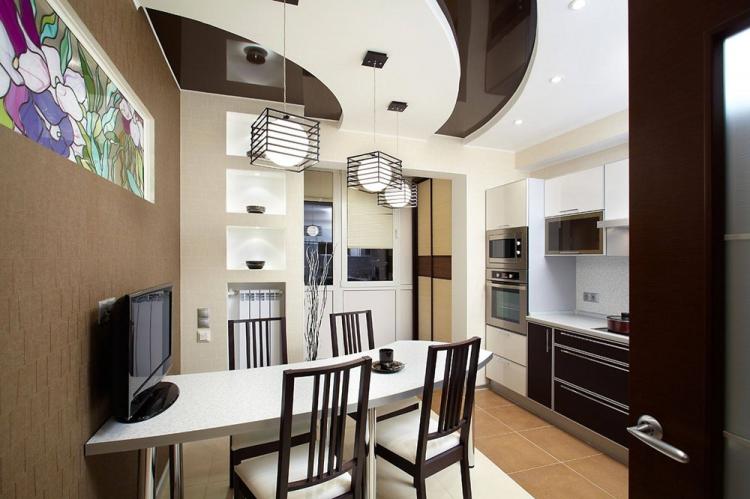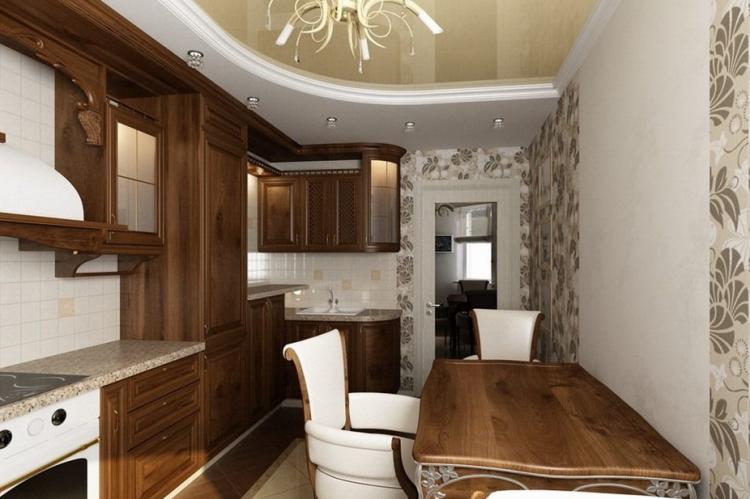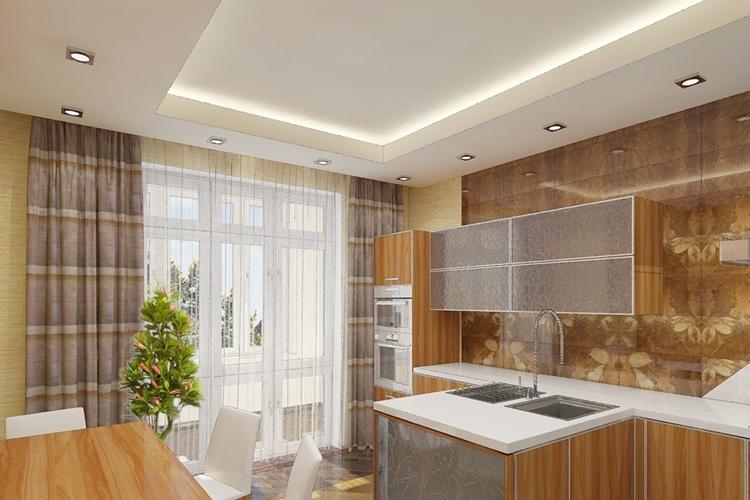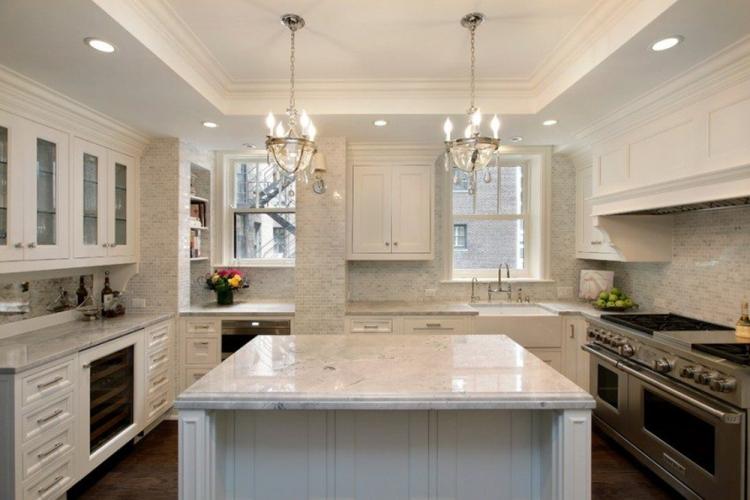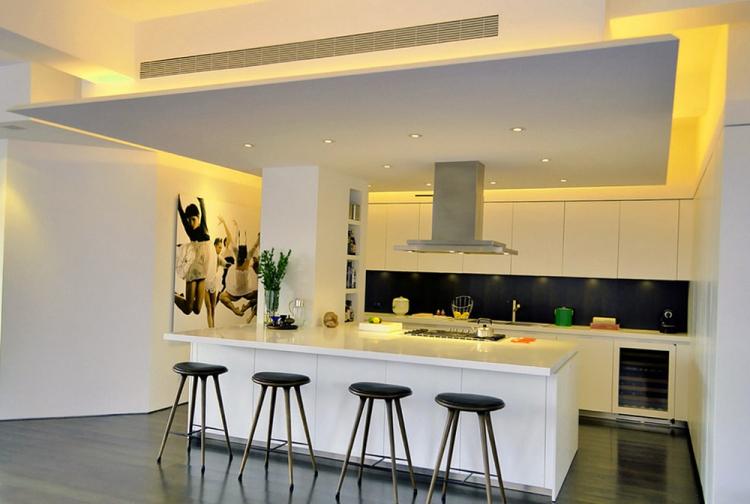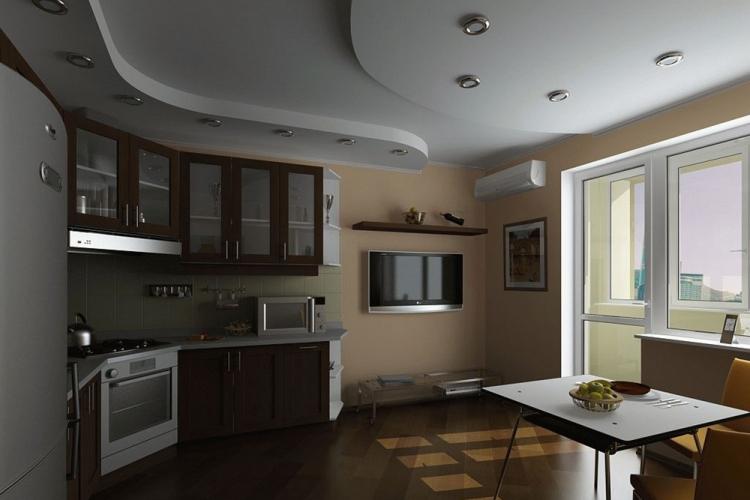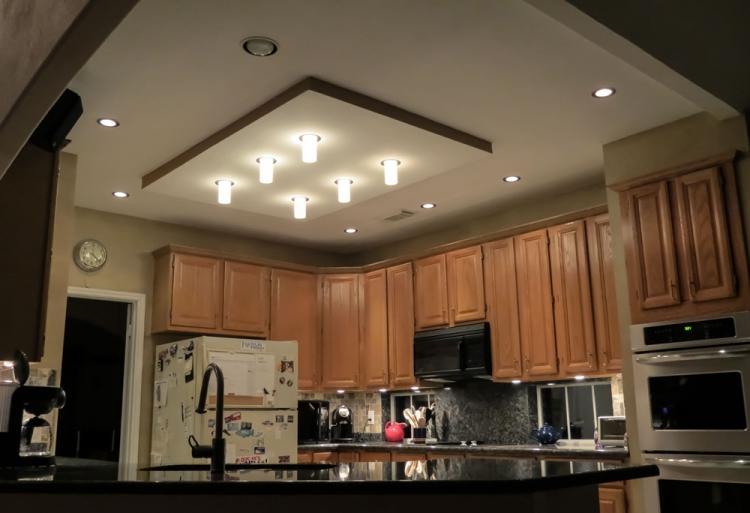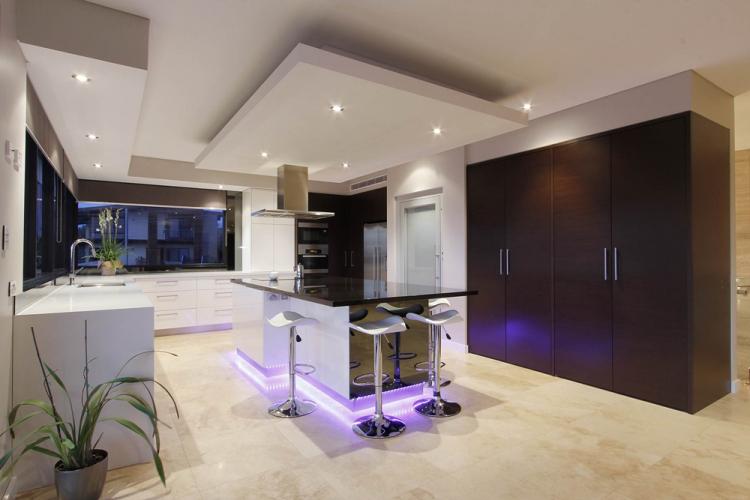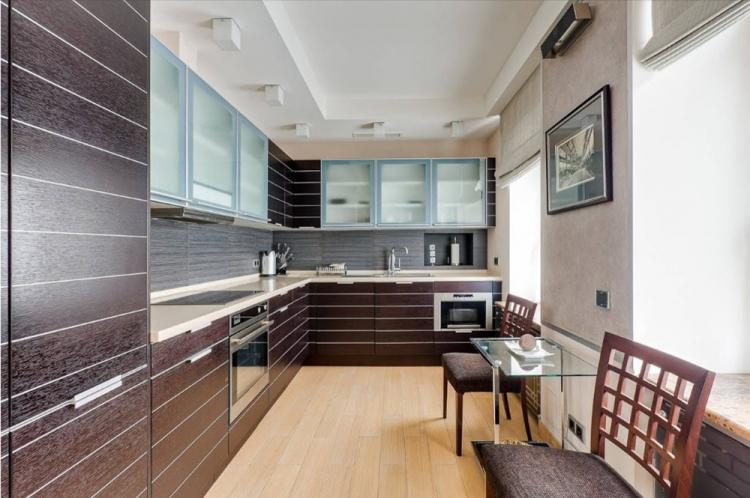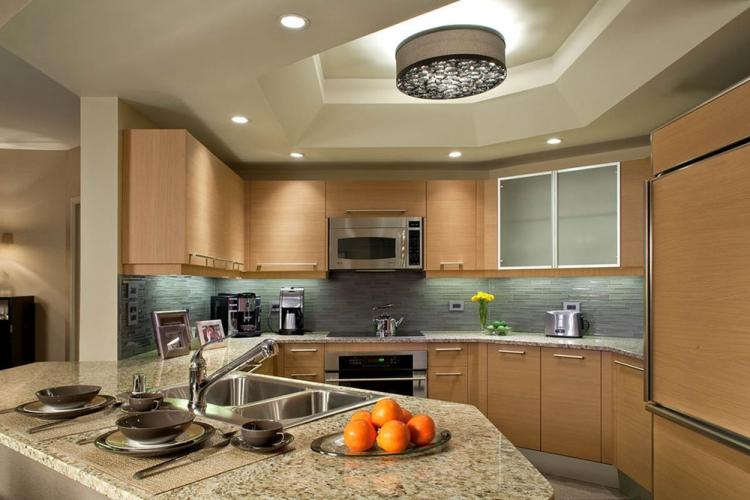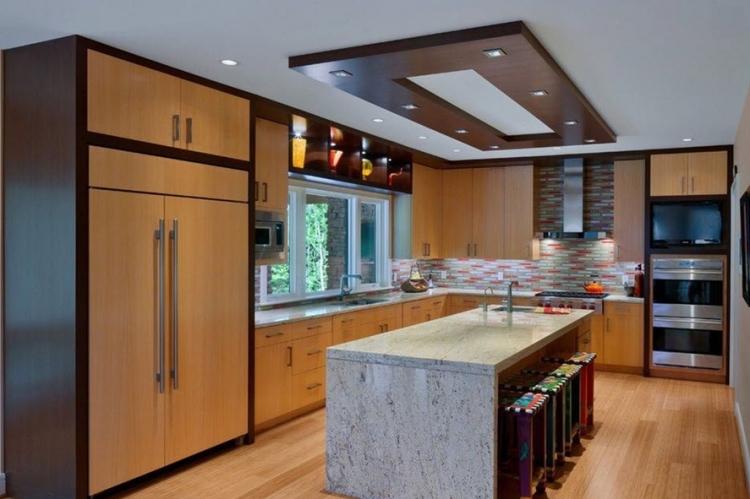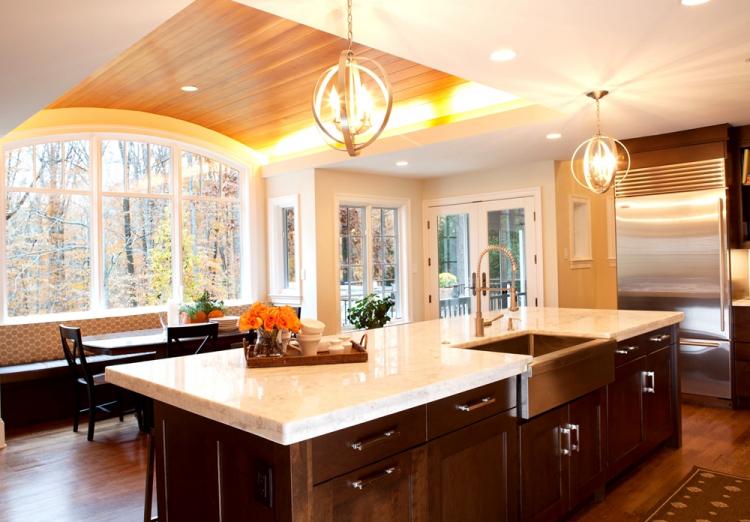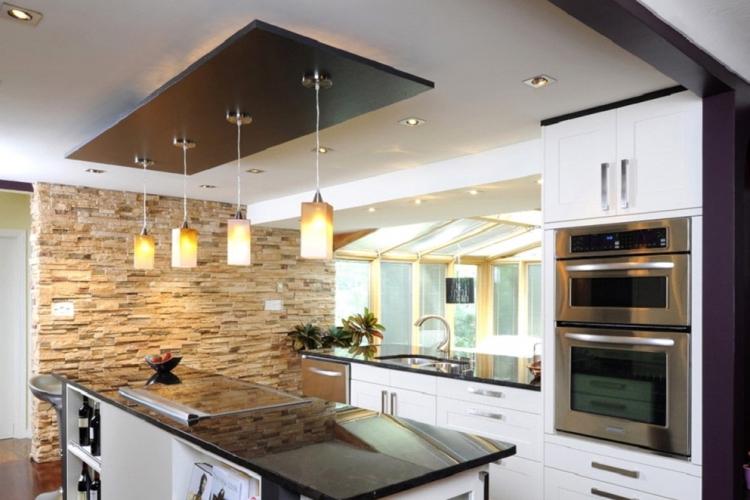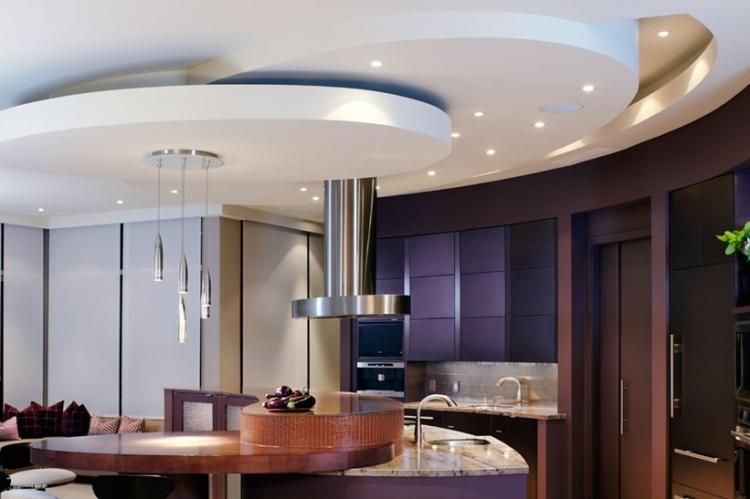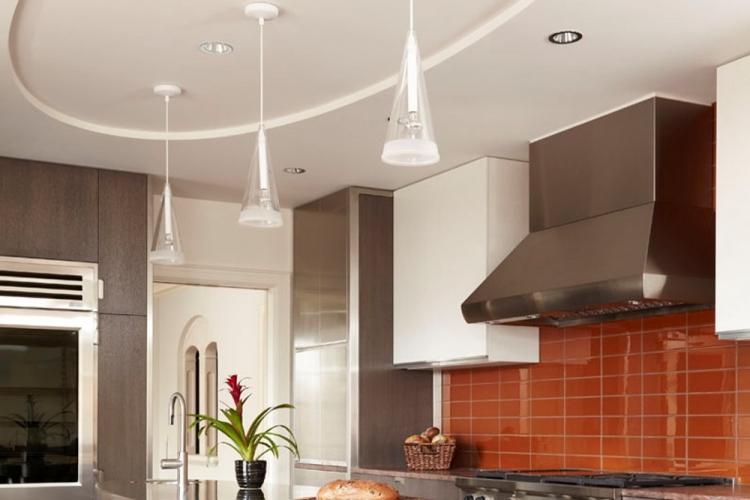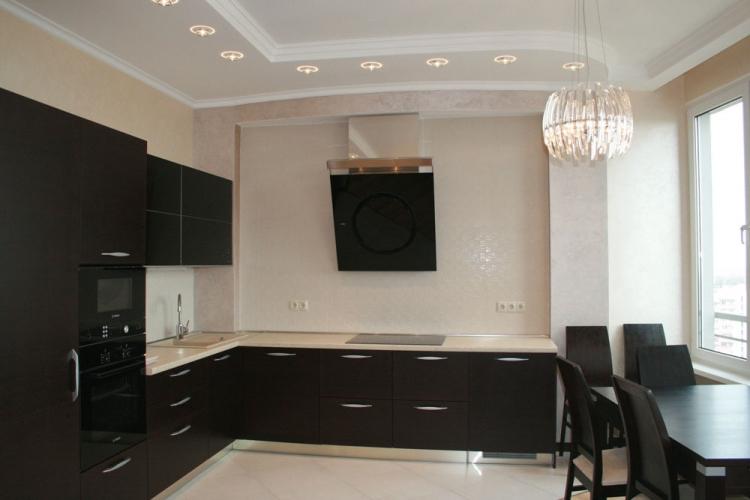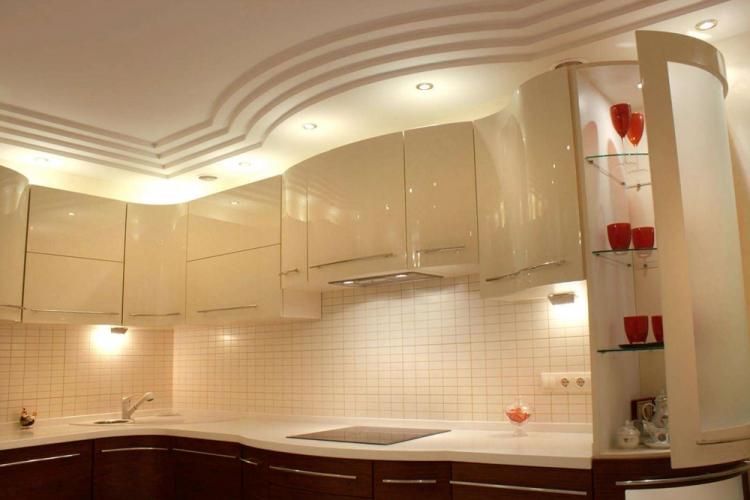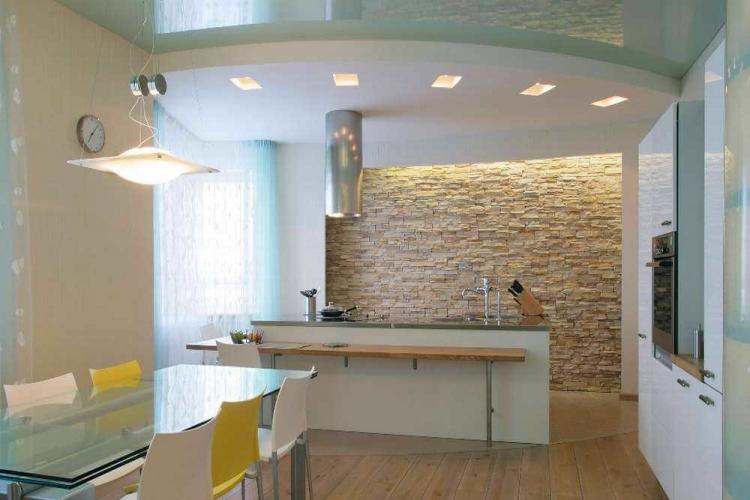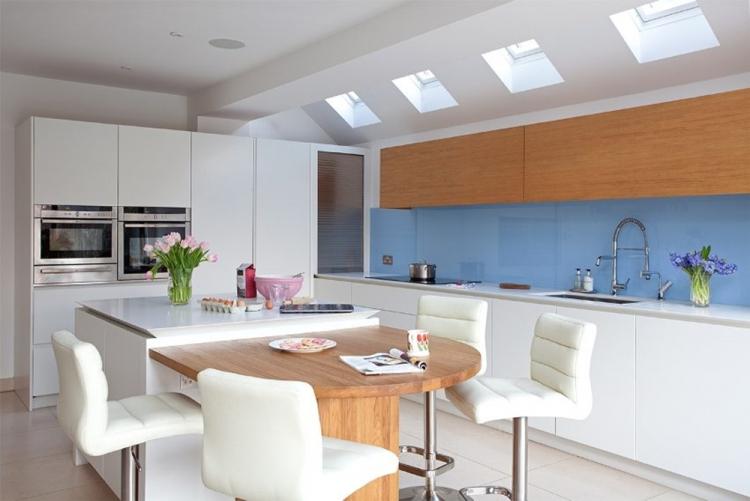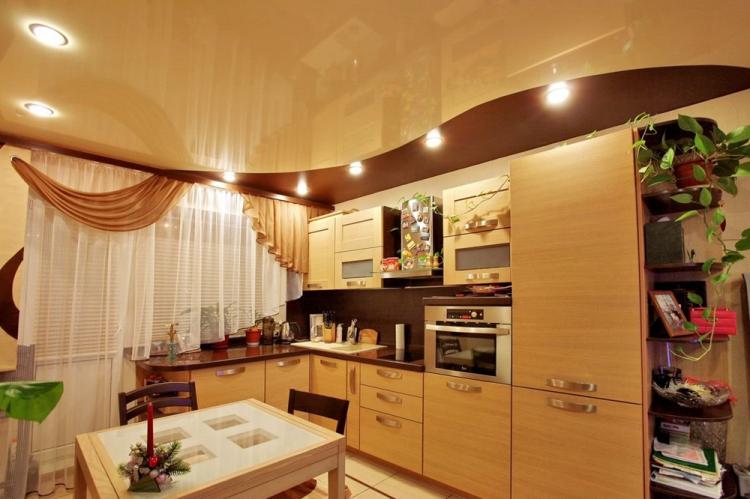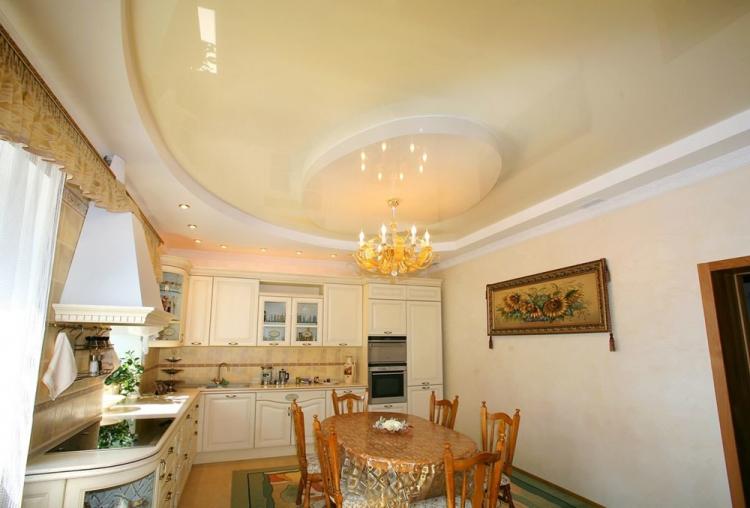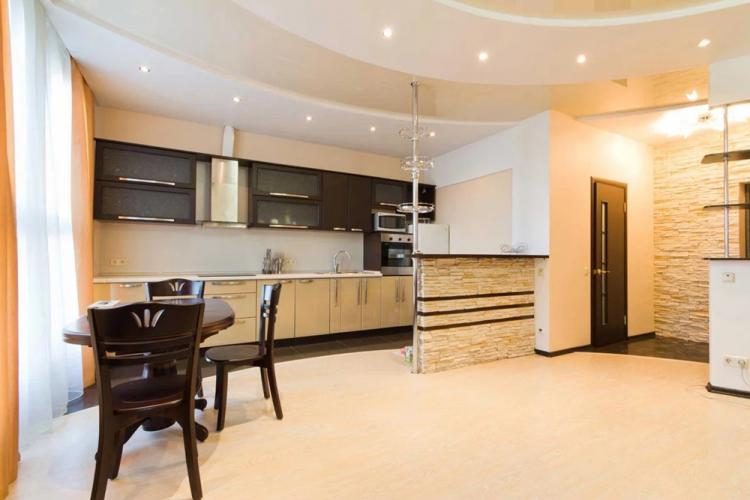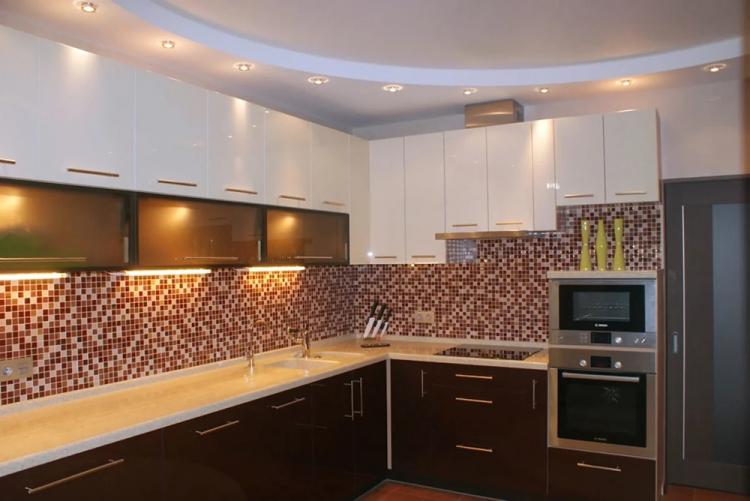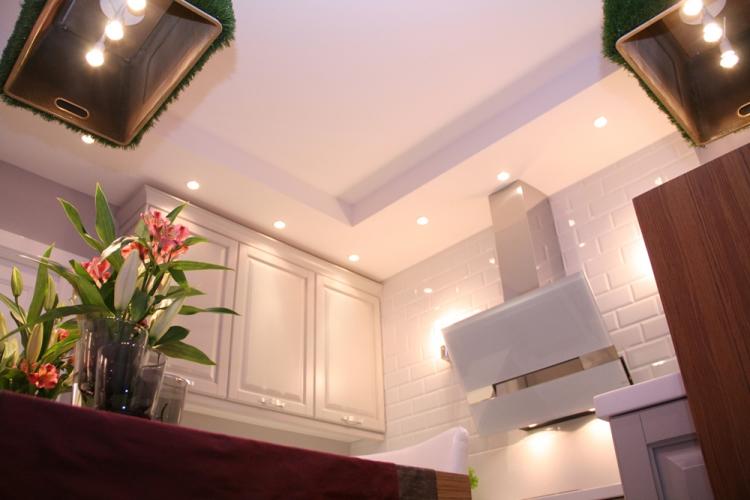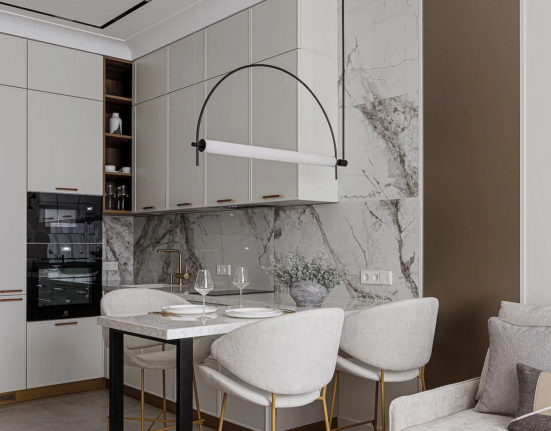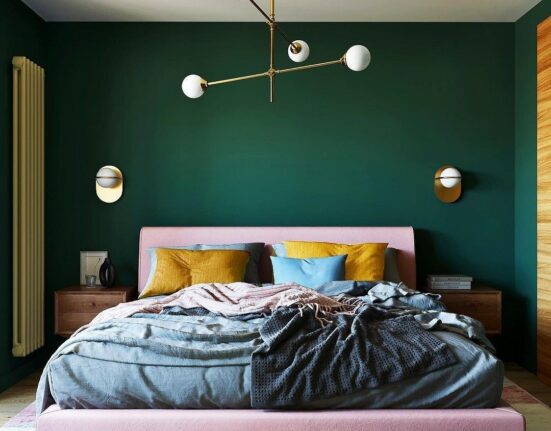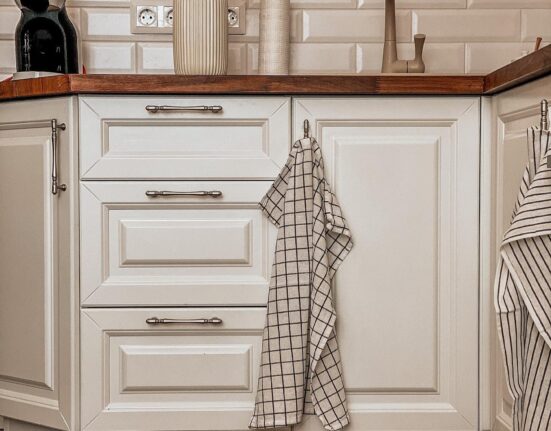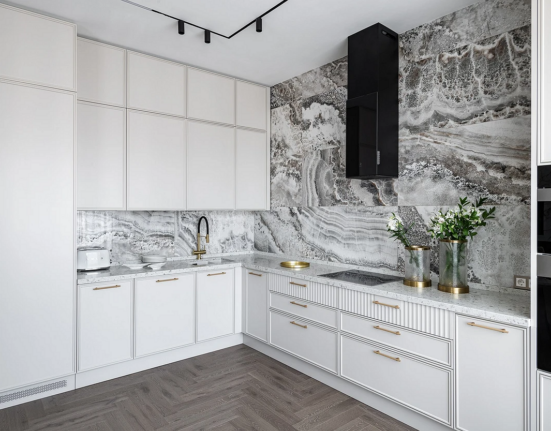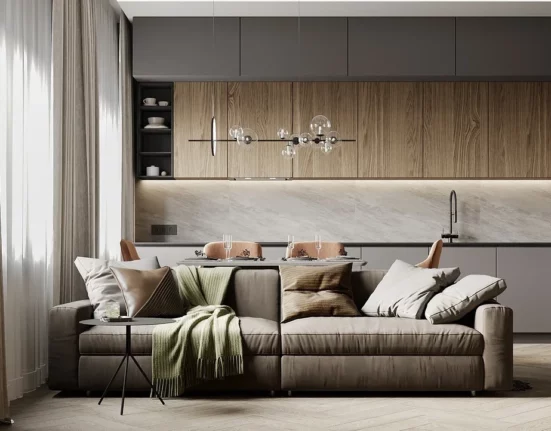To create original volumetric structures, there is still no material that can do better than gypsum board. It is used for partitions, interior walls, niches, protrusions, and ceilings. Now, you can confidently create and experiment with forms and configurations. And we will tell you how!
Features of Gypsum Board Ceilings
Gypsum board is a versatile, affordable, and easy-to-use material. It saves time and money on leveling surfaces and removing old whitewash. Plus, it simplifies choosing and installing a kitchen set with perfectly smooth ceilings.
You can easily mount the frame yourself, and if needed, disassemble it. An additional layer enhances sound insulation from upstairs neighbors. There’s no need to groove the ceiling to conceal wires and pipes, and even bulky ventilation ducts can be neatly hidden with gypsum board.
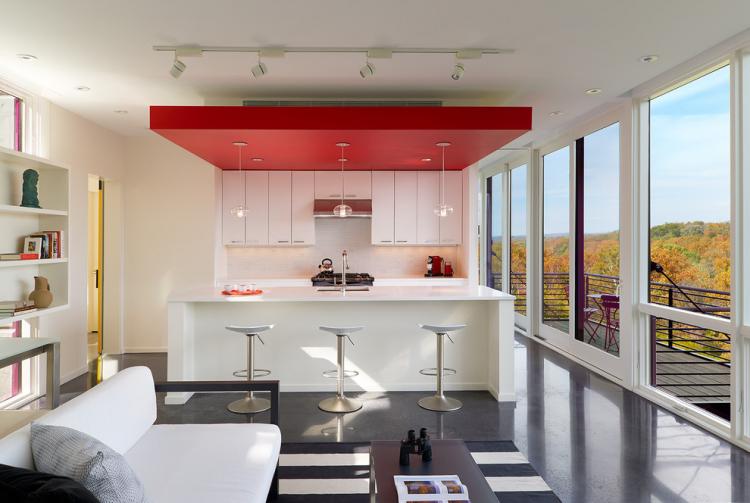
Flexible materials can easily change shape, even bending when moistened and pre-cut. This allows for experimentation with space and the creation of unique solutions in spacious rooms. The final structure is environmentally friendly, and you can paint, plaster, or cover its surface with other materials.
The main problem with gypsum board in the kitchen is its sensitivity to moisture. To avoid this, choose special moisture-resistant sheets with the corresponding marking and use water-repellent paint. And, at the same time, do not forget about high-quality room ventilation, but it is essential in the kitchen.
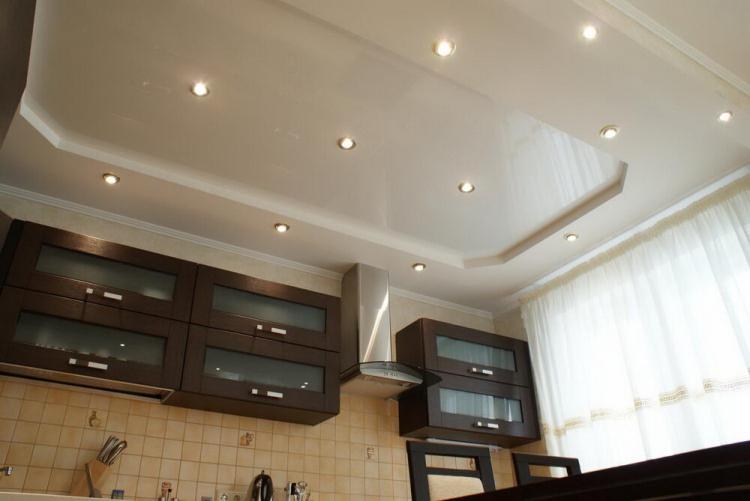
Types of Gypsum Board Ceilings in the Kitchen
Gypsum board is used for suspended structures of various configurations and complexities. These are fully individual projects, but they can be divided into three types.
One-level gypsum board ceilings
This is a simple, concise box of minimal height that provides a flat horizontal surface. Essentially, its main task is to hide defects, level differences, and communications. This is a good alternative to stretch ceilings if they don’t suit you for some reason. The entire installation process involves creating a frame from metal profiles and covering it with gypsum board sheets.

Multi-level gypsum board ceilings
This is a more complex frame structure in which each new level is built on top of the previous one. It is an excellent option for zoning and installing built-in spot lighting. When installing, the main thing is to calculate the location of the suspensions clearly and to cover all edges with special corners.
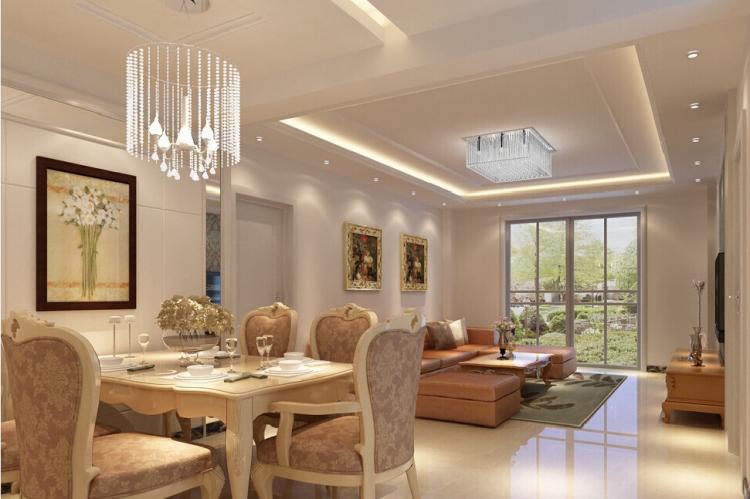
Figured gypsum board ceilings
Figured or designer gypsum board ceilings are multi-level ceilings with a complex configuration. For example, these can be steps, diagonal inserts, curved and curvilinear transitions, asymmetry, and floating suspended structures. Such projects are suitable for large kitchens or spacious combined studio spaces.

Ceiling lighting in the kitchen
Any luminaires can be easily integrated into the gypsum board construction: it is enough to cut a hole or attach a socket. This includes spotlights, suspended luminaires, decorative lighting, and complex multi-level lighting.
Suspended luminaires
Modern suspended light fixtures go beyond classic chandeliers. Create compositions or zone rooms with them. For instance, emphasize the dining area by installing multiple loft lamps with varying suspension lengths above the table.
When installing suspended lighting, remember that gypsum board sheets are fragile and not designed for mechanical loads. Use specialized butterfly anchors for lightweight fixtures to redistribute the weight. For heavier models, fix them directly to the metal frame profiles.
Installing classic, massive chandeliers with metal parts and crystal pendants is more challenging. Screw them directly to the concrete ceiling base, extend them with extension spikes, and cover the outlet with a decorative rosette.
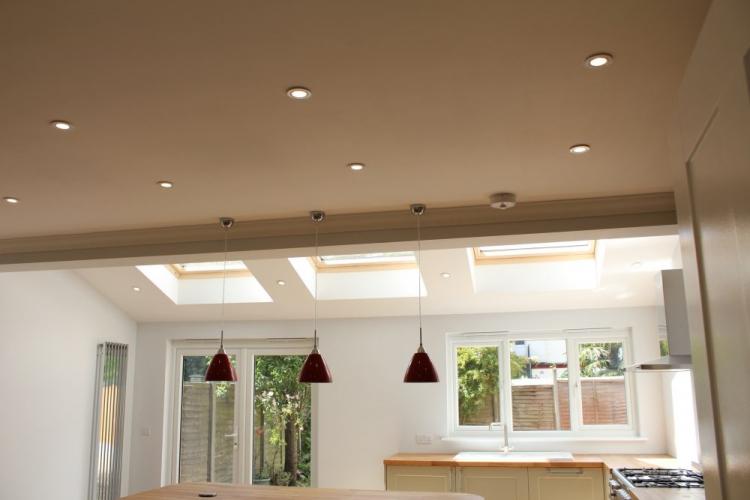
Spotlights
Spotlights are installed in gypsum board ceilings in the kitchen in whole series. For example, along the perimeter, in different zones, along individual elements of a multi-level structure. They provide more even and comfortable lighting than a single central chandelier.
Different collections differ in shape, size, and configuration, and lamps – brightness and intensity. Make sure that the lighting in the kitchen is maintained at a constant temperature; otherwise, it will irritate and strain your eyes. Choose a luminaire with additional protection against moisture and dust.
Spot lighting is best suited for zoning, especially since it can be combined with other types. Even rows along the walls will help visually enlarge the room – this is a good choice for small kitchens. For installation, it is sufficient to cut sockets in gypsum board with a special drill attachment, fix the wires in the terminals, and insert the luminaire into the socket.
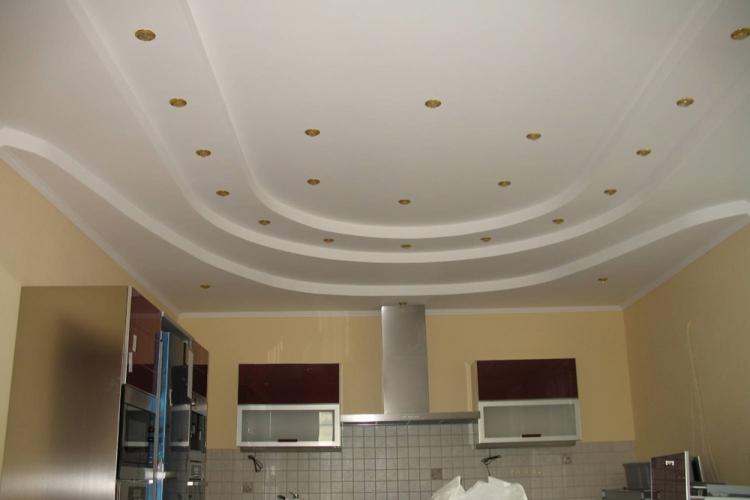
Concealed Lighting
Concealed lighting is often used in multi-level drywall ceilings. It looks as if the structure is lit from the inside. This is usually achieved using LED strips that are hidden in a special groove around the perimeter. To ensure even distribution of light, the height of the niche should be at least 15 cm.
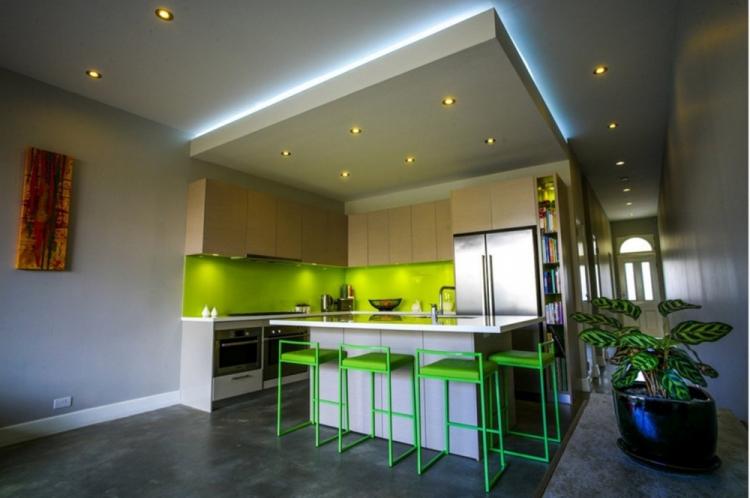
Decorative Lighting
Use LEDs and neon lights in different shades and dynamic effects to create decorative accents and unique atmospheres. This option works well for spacious kitchens where people host holidays and parties. Such lighting quickly transforms the interior, creating a lively and relaxed ambiance.
LED strips offer easy installation and a long working life. Another option is transparent duralight cords with colored light bulbs. While LEDs can provide specific and full lighting, duralight has insufficient power for that purpose.
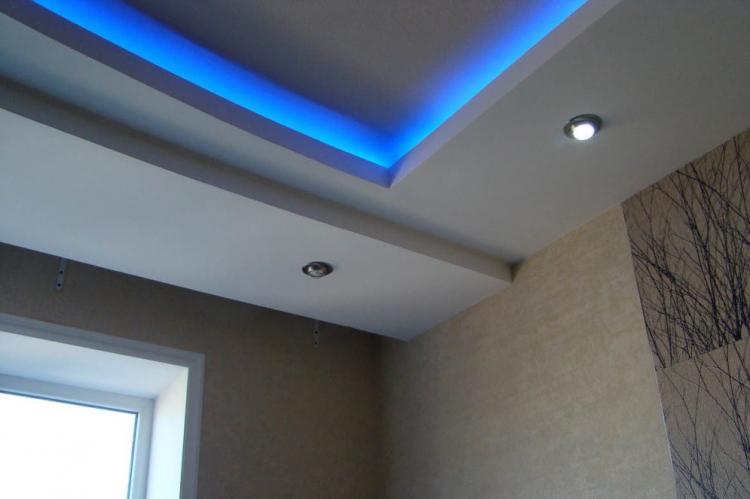
Installation of Drywall Ceiling in the Kitchen
If you have no experience in construction and repair work, it is better to seek professional help for the installation of a drywall ceiling. Improperly secured framework, a lack of suspensions, improper fasteners, or uneven distribution of weight can lead to sagging or even the collapse of the structure.
Fragile drywall requires careful handling, as it can easily break and damage. Do not use cracked sheets even after treatment with building mix or glue. The result will still not be strong and reliable enough.
In addition to regular and waterproof options, gypsum boards are available in fire-resistant, high-strength, without cardboard, and gypsum fiberboard versions. The required tools for installation are straightforward, including metal profiles, hangers, fasteners, level, square, tape measure, saw, drill and screwdriver with various attachments, ladder, and pencil.
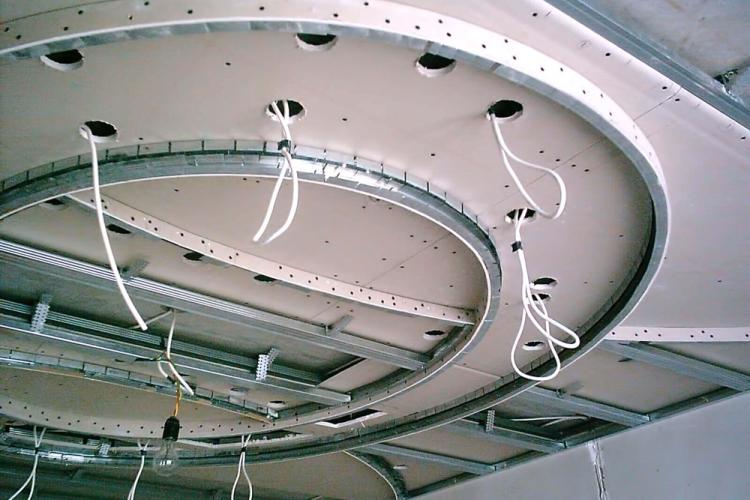
Install perimeter guides around the room and place perpendicular supports within them. For complex multi-level and shaped structures, start by marking out the design. Use P-shaped hangers with pre-drilled holes to attach profiles to the ceiling, making installation and level adjustment easy.
Before covering, place pipes, wires, and other utilities within the framework. Wire the room and extend wires to the switch, leaving the ends exposed under the light fixtures. Create holes for the fixtures while laying sheets, as this is more convenient than drilling into a finished ceiling. If there’s an issue, you can easily replace a damaged sheet.

Attach gypsum boards to the framework either strictly perpendicular or parallel, and reinforce all joints and connections with tape and spackling. Afterward, sand and polish all surfaces, then move on to the exterior finish.
Wait a few days for the construction to settle before filling the joint seams with spackling. Clean and moisten the seams and fill them with the installation mixture. Then press the reinforcing tape into it and apply a layer of plaster over it.
For exterior coverage, special enamels and hydrophobic paints are the best options. You can also cover the surface with PVC film, which is resistant to moisture, stains, and odors and easy to clean. Film-covered elements will add a designer touch to your multi-level construction.
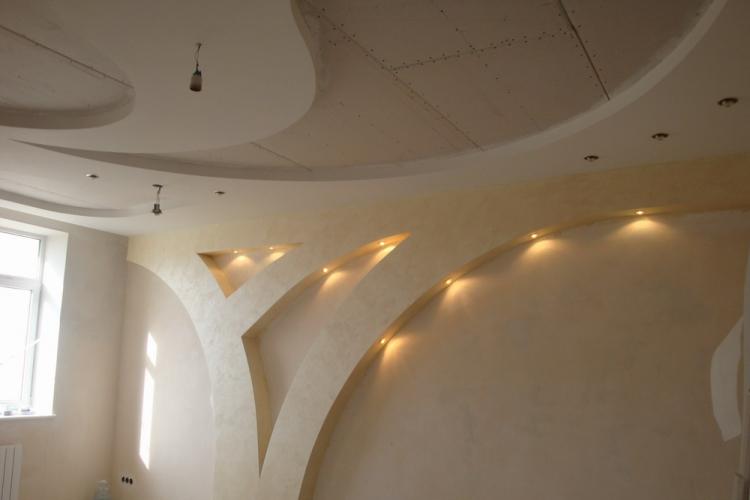
Gypsum Ceilings for a Small Kitchen
When designing a small kitchen, keep in mind that a gypsum box will inevitably reduce the room’s height. Of course, even a single-level structure will hide all irregularities, defects, and utilities.
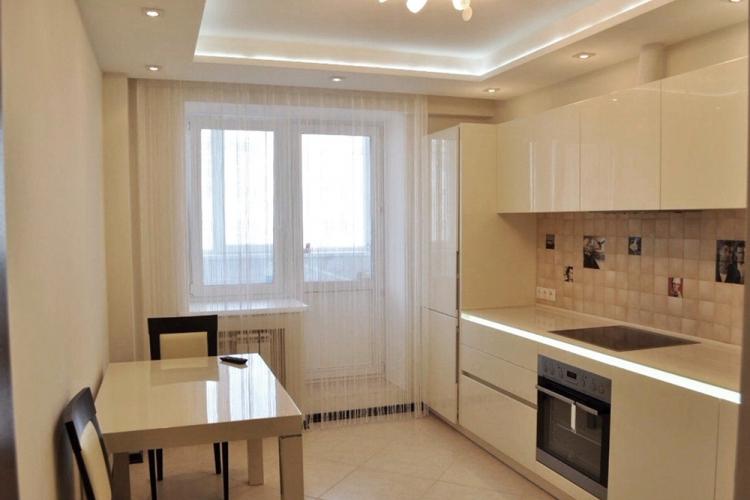
Gypsum Ceilings in the Kitchen – Design Ideas
Gypsum boards offer tremendous design possibilities when it comes to decorating ceilings. It is easy to work with, so you can create the most creative and original shapes in your kitchen. Just take a look at this collection of examples and finished solutions!
